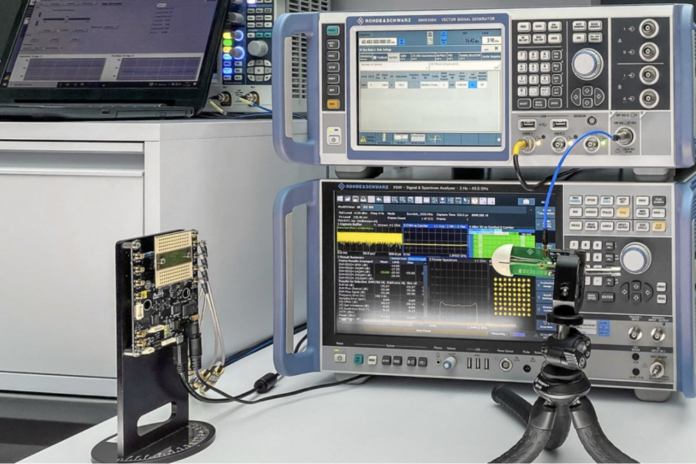Rohde & Schwarz’s test and measurement combines with Sivers Semiconductors to bring mmWave of relief
German specialist equipment tester Rohde & Schwarz (R&S) has teamed up with Swedish comms chip manufacturer Sivers Semiconductors to help 5G infrastructure builders test the range of spectrum options for RANs.
The pact was formed in reaction to a new development from the Third Generation Partnership Project (3GPP), which has released a new specification for its 5G New Radio (5G NR) standard to 71 GHz, which is expected before July 2022.
The extension involves a change to the physical layer of the networking stack, specifically the addition of two new subcarrier spacings (480 kHz and 960 kHz) and the support of wider signal bandwidths of up to 2 GHz.
On the same frequency?
In order to support this new frequency band manufacturers of Radio Frequency (RF) transceivers will have to change their cellular applications. In addition, designers and manufacturers of transceiver chipsets will be faced with a new entity that cannot be measured, because there is no testing equipment for non-cellular IEEE standards operating in mmWave bands.
Erik Öjefors, chief technology officer of the wireless business unit at Sivers Semiconductors, talked of the new standard as “yet another proof point in mmWave band technology.”
Open RAN specialist manufacturer Picom has said to took it three years to develop its new system on a chip, the PC802, which is aimed at network builders who might want to use 5G NR.
The availability of testing systems could speed developments for Open RAN kit makers and most European mobile industries and governments are keen to diversify the supply chain of equipment makers.
Here’s the technical detail
For their joint testing efforts, Sivers Semiconductors provided an evaluation kit as device under test (DUT), powered by a Radio Frequency Integrated Circuit (RFIC) TRXBF01 and the RF antenna module BFM06010. The RFIC supports IEEE 802.11ad/ay modulations up to 64QAM over the full frequency range from 57 to 71 GHz.
The setup consisted of the R&S SMW200A vector signal generator, which supports frequencies up to 67 GHz to 72 GHz in overrange mode and the R&S FSW85 signal and spectrum analyser, which has an integrated signal analysis bandwidth of up to 8.3 GHz and supporting RF frequencies up to 90 GHz.
The set up was completed with an R&S ATS1800C compact antenna test rang based 5G NR mmWave test chamber. There are more technical details here
Moving 5G NR forward
The bottom line is that the collaborators have contributed to better measurement, which underpins progress in manufacturing.
“We demonstrated a pathway for future deployments in the 60 GHz band on the ‘[new] standard,” said Öjefors, “early access to test and measurement is critical for technology development.”
Andreas Pauly, executive VP of Test & Measurement at Rohde & Schwarz, said the rationale of their mission is about: “helping inventors to develop cutting-edge technology that will make advanced use cases of 5G”.


